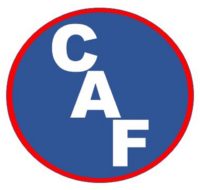Previous site pages have discussed the Water, the Concentrates at length, and how to make appropriate (porportioned) solution.
In this section, read on to bring it all together and make the BUBBLES (Water) to absorb heat or protect fuels.
What is Foam? Foam is Water + Foam Concentrate (=Solution) + Air + Agitation
Foam Fact: Foam is Bubbles…. Bubbles is Water!!!
Why use Foam in Firefighting?
1) Water (H2O) molecules do not attach to Carbon (C) molecules – All ordinary combustible fuels contain C.
2) Water has a high surface tension.
3) Water Drops have a relative high surface to mass ratio (6:1) and are affected by gravity.
4) Foam is 2-8 times more effective at absorbing heat that plain water.


By changing water to Foam we accomplish the following:
1) Makes water C loving so it sticks and clings to the fuels
2) Reduces water surface tension so it soaks into the ordinary combustible materials
3) Adding air, stretches the drops into bubbles, increasing the surface to mass ratio (100%) exposing all the water to the heat, absorbing heat faster and more efficiently. Bubbles float in air and are less prone to the effects of gravity.
As fire burns, it pulls in O2 (oxygen). Fire = Fuel, Heat and Oxygen. Bubbles (Water) can float in the air around the fire. In addition to cooling the atmosphere (reducing the heat), the bubbles can be pulled directly into the fire to cool the fuels. This is often visible when CAF (Compressed Air Foam) is applied in one area ( or room in a structure) and nearby fire (or in another room) is reduced or extinguished without direct application as would be required by water only.
NFPA Definition of Foam
Water + Foam Concentrate (= Sol) + Air + Agitation = Foam

The three main methods of making Class A Firefighting Foams are:
- NAF – Nozzle Aspirated Foam
- CAF – Compressed Air Foam
- SOLUTION – Water + Concentrate
NAF – Water + Concentrate (Solution) are mixed together at the pump. The air and agitation are added at the special aspirating nozzle. NAF is low energy foam that uses atmospheric air.
CAF – with CAF, high pressure air is added to the water+ concentrate (Solution) at the pump. The mix is agitated in the hose creating a high energy finished foam before the end of the hose.
SOLUTION – Solution is just the water + concentrate mix, pumped directly out of a nozzle. Solution by itself is not actually a foam as it does not have air and agitation. However, as the solution leaves a nozzle, the air shear can cause some air to enter the solution, and if the solution is bounced off of an object (for example, a ceiling, wall or floor), it can cause agitation and thus the solution will make some foam (bubbles).
Note that in all 3, Foam is made using the same formula – Water + Concentrate (=Solution) + Air + Agitation = Foam (Bubbles)

NFPA Defines 4 Finished Foams – Solution, Wet, Fluid & Dry
Solution is described above – made with no special nozzle. Very few Bubbles.
Wet – very high water content, low expansion (Low X). Looks like melted ice cream. Made via NAF and CAF. Used to absorb heat, put the fire out!
Fluid – A dryer foam that is 3 dimension, almost a shaving cream consistency. Made via CAF. Also Low X. Used as a reflective protection blanket against embers and radiant heat.
Dry – High expansion (Hi X), very dry foam, very light and can easily blow away if used outdoors. Made via NAF.


What do you want to do with your Bubbles? Remember, Bubbles is WATER. Low X is wet. High X is dry. Water (in the Bubbles) absorbs heat. To fight a fire, wet foam is necessary. It’s full of water. Water cools fire. Wet Foam (Low X) fights and cools fire.






































